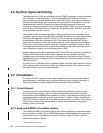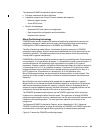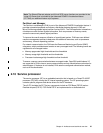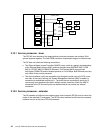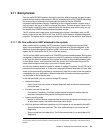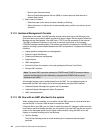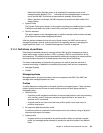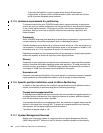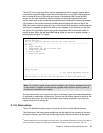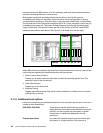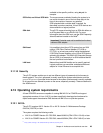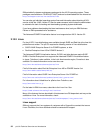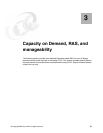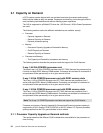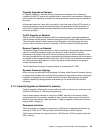
46 p5-570 Technical Overview and Introduction
– To enhance the flexibility to use the system within several different logical
configurations, a System profile could be defined to collect more than one Partition
profile to provide requested system behavior.
2.11.5 Hardware requirements for partitioning
To implement partitioning on a POWER5-based system, resource planning is important to
ensure that you have a base configuration and enough flexibility to make desirable changes
to the running logical partitions. To configure a partition, the minimum requirements are
processors, memory, and virtual or physical resources to provide boot, application and
network support.
Processors
Within POWER5 technology and depending on performance requirements, a logical partition
can be created by using a shared processor pool or a dedicated processor.
Shared processors can be defined by a fractional number starting at 1/10th the capacity of a
real processor. To calculate the required processor power, a real processor is divided in 100
processing units, so 1/10 of a processor is equal to 10 processing units.
Dedicated processors are entire processors that can be assigned to a single logical partition
without the capability to share free capacity to other logical partitions.
Memory
Depending on given application and performance requirements, a logical partition requests
memory to execute the installed operating system and application. To create partitions, the
minimum memory requirement is 128 MB per logical partition and dynamically increases in
increments of 16 MB from the overall memory available in the system.
Expansion unit
Expansion units extend the flexibility of the server system to increase the number of possible
logical partitions by adding additional hardware, such as storage or network devices.
2.11.6 Specific partition definitions used for Micro-Partitioning
In addition to the base definition for a partition, new parameters must be defined in order to
achieve more flexibility of partitions using Micro-Partitioning technology.
Capped and uncapped partition
A capped partition indicates that the local partition will never exceed its assigned capacity. An
uncapped partition indicates that if the capacity entitlement is reached, additional capacity
from the shared pool can be used if available.
To manipulate the behavior of uncapped partitions, the parameter uncapped weight must be
defined, in the range from 0 through 255. To prevent an uncapped partition from receiving
extra capacity, the uncapped weight parameter should be 0.
The default uncapped weight is 128.
2.11.7 System Management Services
Booting up a full partition system or a logical partition to System Management Services
(SMS) using the ASCII
8
interface or the GUI results in identical contents and functionality.



